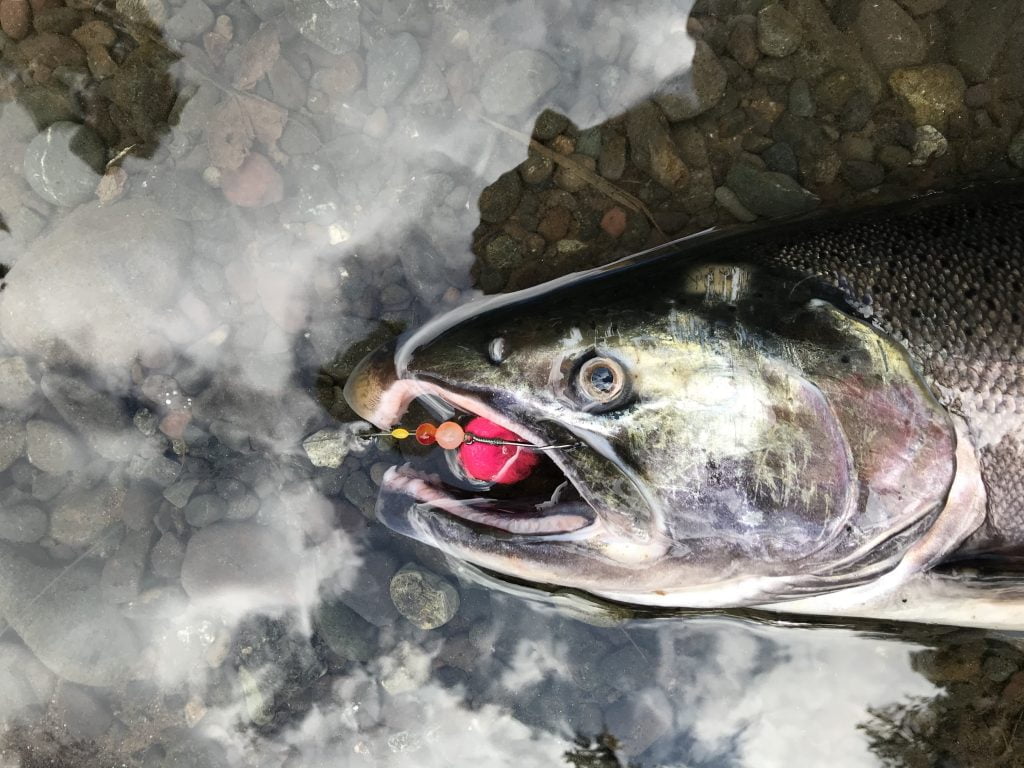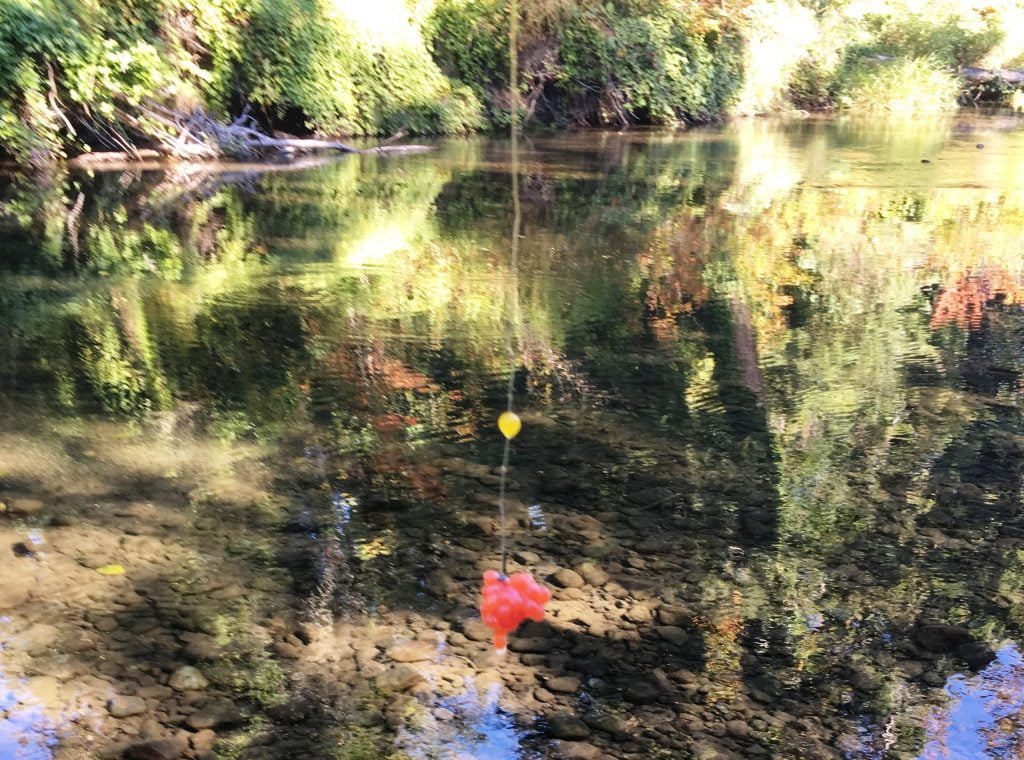
Stone Cold Beads are unique natural stone fishing beads. They are friendly for the environment but deadly effective for catching fish. With that in mind, here are some best practices. These practices will help you not only catch more fish, but also get the most out of your beads. Read below to learn how to fish Stone Cold Beads Fishing Beads.
Rigging SCB Natural Stone Fishing Beads
When you fish Stone Cold Beads one of the best methods an angler can use is to drift them under a float. This is by far one of the most effective was to fish our beads. Since SCB beads are made of high density stone, depending on the depth and current of the waters your fishing you may not even have to add additional weight. If you can gauge how deep the hole is your looking to fish, try to float your beads about a foot or two from the bottom. This is generally where the larger fish tend to hang. If you can apply scent to your bead setup do it. When we were initially testing our beads for effectiveness our strike rate literally tripled when we applied scent.

Although these beads are effective alone, when applied with natural bait, it’s like a feeding frenzy! We found that when we put a small clump of natural salmon roe with our bead the strike rate was literally 100%. As in every drifted the bead, salmon egg cocktail was literally attacked by a school of fish.

Stone Cold Beads are also effective for free drifting off the bottom in medium to fast current. We have caught salmon over and over again using this method. Just be aware that because of the added weight on our beads they will hit bottom and stay if the current is to slow. In this case, you will need to give them a little twitch through the drift for optimal results. Avoid bottom drifting in slow current or frog water conditions.

Another Great thing about Stone Cold beads is that they make fantastic lure accents. For example, some of our clients like to use them on their Sturgeon rigs. Others use them on spinner setups and we even have a strong following of Fly Fisherman who love to tie flies using our beads.

Pegging Stone Cold Beads Beads
Many Anglers like to peg their beads, When fishing under a float we some times don’t see the need to peg our Stone Cold Beads but instead allow them to slide freely. However when drifting off the bottom we recommend pegging your Stone Cold Beads. Since Stone Cold Beads are made of actual natural gemstone, there are a few recommended best practices that will help increase the life of your beads and prevent line breakage.
Heed the Warning
First and foremost it’s important to understand that when fishing Stone Cold Beads you should never use the line looping or bead knot pegging method. Unlike soft fishing beads or hard plastic beads Stone Cold Beads are solid and super hard, similar to a glass bead. If pegged incorrectly they can literally cut your line leaving you frustrated and even worse losing a fish. This is way it is extremely important to use the following methods we suggest when pegging your Stone Cold Beads.
Our most preferred method is to peg Stone Cold Beads with a rubber bobber stop. For line 12-30 lbs use the size large, 6-12 Medium.

What makes these bobber stops so awesome is that they are very easy to apply and they are fairly inexpensive.
Rubber Bobber Stop Pegs

Rubber Band Peg
Most importantly is that they are extremely effective and work perfectly with our beads. The second method of pegging we recommend is using a rubber band.
They are even more inexpensive than the rubber bobber stops and and can be purchase almost anywhere.

Since our beads have a 1 mm hole you should not use a rubber band more than 1/16 of an inch wide.
This will ensure that the rubber band does not break off when threading through the bead next to your line.

Bobber Stop Knot Peg
Lastly is the least expensive method is a traditional Bobber Stop Knot. This method is the most affordable but requires some basic skill to tie.
However the bobber stop knot is very effective and if you use the same color line as your main line it’s very stealthy.


Egg Stack setup
Another important factor is how you rig your beads when drifting off the bottom. If like myself you run a double bead I call the egg stack set up. At a minimum you should peg above the top bead to be able to hold the beads down next to the hook and prevent slippage. The reason being is that when drifting off the bottom, the bead set up tends to snag up on rocks. When you whip the pole hard enough in the process of trying to free up the snag you can cause the beads to not only collide together. If they continue to collide together or against the hook, eventually a beads can break. Yes, Stone Cold Beads are made of stone not steel.

Remember, our stones are very strong but as with any natural gemstones they can have micro fractures or inclusions. These are small flaws within the stone. This makes natural stone beads somewhat vulnerable in that if they smack together or against the hook too strongly they can break. For optimal protection against having this occur we use the large rubber bobber stops both between the hook and the beads and above the top bead to secure it on top of the other bead. This keeps them nice and tight together and will significantly improve the life span of your natural stone fishing beads.
Selecting The Correct Fishing Beads Size
Selecting the correct beads size is a vital part of ensuring the effectiveness of your fishing experience. Overall smaller is better, beads ranging from size 6mm – 8mm for targeting trout and salmon. Use 10mm – 12mm beads are great for targeting larger salmon or on sturgeon rigs. Overall you want to try to match your beads size with natural salmon egg sizes, which can range anywhere from 6mm to 10mm depending upon the species. Sizes 12mm to 14mm can be very effective as well especially for bigger fish. Play around with different sizes to determine what size is are most effective for the body of water your fishing.
You’ll also need to match your hook size accordingly depending on the size of the beads. If your hook is too small you may have issues with being able to set the hook. If you need the extra weight of a larger bead, use a dual bead setup with smaller beads. This way the bead size will not interfere with the hook.
Selecting colors for optimal effectiveness
Many times fishing beads are selected because of their bold coloring. Bright colors can be effective in murky water conditions when visibility is poor. However, in clear water conditions, natural colors tend to produce the best results. Select your bead colors based on the types of fish that are in the water and the water and weather conditions. For example on an overcast day with clear water conditions overly bright colors might not we necessary.
Natural colors or dark colors like Blood Roe, Ultra Fresh Orange or Chum Run can be very effective. In milky water and brackish water conditions, Green Grape, Mottled Pink or Orange Crusher can be the ticket as well. It’s always best to bring a good selection of beads and be prepared for the different conditions. You never know what you may be facing on the water that day. Have a variety of beads, fish them and find out what works best for the waters your fishing.

